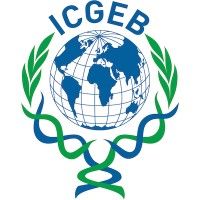ArticleOA
作者: Bringas, Ricardo ; Garay, A Hilda ; Valenzuela, Carmen ; Ruiz, Erlán ; Mendoza, Mario ; Ayala, Marta ; Feria, Indalecio ; Marrero, Marleny ; Acosta, Sahily ; Morán, Rolando ; Cardoso, Pedro ; Herrera, Luis ; Basulto, Roberto ; Fernández, Luis E ; Martínez, Carolina ; Sánchez, María Carmen ; Arteaga, Niurka ; Sariol, Francisco ; Guerra, Alfredo ; Muzio, Verena ; de Quesada, Lourdes ; Cedeño, Pável ; Saura, Pedro López ; Reyes, Osvaldo ; Ramirez, Amilcar ; Molero, Guillermo ; Cid-Arregui, Angel ; Fernández, Yairis ; Medina, María ; Campos, Magalys ; Cosme, Karelia ; Quintana, Maricel ; Junco, Jesús A ; Alvarez, Allelin ; González, Lourdes ; Bover, Eddy ; Guillén, Gerardo ; Pimentel, Eulogio ; López, Matilde ; Touduri, Henio ; Capote, Carlos ; Campal, Ana ; Calzada, Lesvia ; Fuentes, Franklin ; Vela, Idania ; Baladrón, Idania ; Rodríguez, Ayni ; Arzuaga, Lina ; Bacardi, Dania ; Rosales, Pedro ; Porres-Fong, Liliana ; Rodríguez, Ranfis ; Rubio, Elier ; Carr, Adriana ; Castro, Maria D
Heberprovac is a GnRH based vaccine candidate containing 2.4 mg of the GnRHm1-TT peptide as the main active principle; 245 μg of the very small size proteoliposomes adjuvant (VSSP); and 350 μL of Montanide ISA 51 VG oil adjuvant. The aim of this study was to assess the safety and tolerance of the Heberprovac in advanced prostate cancer patients as well as its capacity to induce anti-GnRH antibodies, the subsequent effects on serum levels of testosterone and PSA and the patient overall survival. The study included eight patients with histologically-proven advanced prostate cancer with indication for hormonal therapy, who received seven intramuscular immunizations with Heberprovac within 18 weeks. Anti-GnRH antibody titers, testosterone and PSA levels, as well as clinical parameters were recorded and evaluated. The vaccine was well tolerated. Significant reductions in serum levels of testosterone and PSA were seen after four immunizations. Castrate levels of testosterone were observed in all patients at the end of the immunization schedule, which remained at the lowest level for at least 20 months. In a 10-year follow-up three out of six patients who completed the entire trial survived. In contrast only one out eight patients survived in the same period in a matched randomly selected group receiving standard anti-hormonal treatment. Heberprovac vaccination showed a good security profile, as well as immunological, biochemical and, most importantly, clinical benefit. The vaccinated group displayed survival advantage compared with the reference group that received standard treatment. These results warrant further clinical trials with Heberprovac involving a larger cohort.






